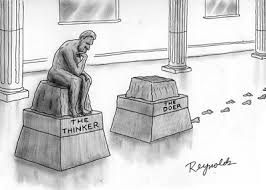Innovation is about creating insightful ideas and
taking them to the market successfully.
1. What we can learn from Bell Labs
There have been many analyses on what made Bell Labs excel in Innovation. Jon Gertner's article in NY Times is very insightful on this topic. After reading his essay, I felt that these three practices majorly contributed to their success. These are very relevant to the innovation challenges that we face today.
Recent Interview
- Bell Labs housed thinkers and doers under one roof.
- Bell Labs’ created satellite facilities in the manufacturing plants, so as to help transfer all these new ideas into things.
- Researchers were given not only freedom but also time. Lots of time — years to pursue what they felt was essential.
2. Freedom
The third point of giving freedom and time to researchers is crucial to incubating insightful ideas. In fact Dan Pink's research says that innovators like to be self-directed - they care for this freedom more than anything else. Freedom ranks along with Purpose and Mastery as the three most important factors that motivates innovators.
Dan Pink's TED talk - www.ted.com/talks/dan_pink_on_motivation.html
Dan Pink on the Science of Motivation -
Dan Pink on the Science of Motivation -
www.youtube.com/watch?v=u6XAPnuFjJc
|
Many Innovative companies like 3M, Google encourage their employees to pursue their ideas for at least 20% of their time
3. Transforming Ideas into Things
“The ability to convert ideas to things is the secret of outward success.” | |
How Companies turn Customer's big ideas into innovations -
The importance of transforming ideas into things cannot be overstated. We are all familiar with the variety of challenges that one faces while doing that.
http://www.cisco.com/web/strategy/docs/manufacturing/innov_in_manf_whitepaper.pdf
http://www.accenture.com/SiteCollectionDocuments/PDF/INNOVATIONv1h929.pdf
MIT Round table on the Future of Manufacturing -
http://dc.mit.edu/sites/dc.mit.edu/files/Roundtable%20The%20Future%20of%20Manufacturing%20Innovation.pdf
We need freedom to come up with creative ideas but we need the disciplined execution to transform these ideas into things. Today there is no dearth for god ideas. It is our ability to effectively convert ideas into things by balancing freedom (for creativity) and discipline (for execution) that will help us to differentiate.
I came across, Thatva, an Innovation platform which works towards enabling the principle of striking a balance between creative freedom and execution discipline - www.Thatva.com
4. Thinkers + Doers

Bridging the gap between the mind and the hand
Lea Strickland says that successful innovation needs both thinkers and doers - http://www.portfolio.com/resources/2011/07/11/lea-strickland-says-successful-innovation-requires-both-thinkers-and-doers - i liked her clarity and i have produced here verbatim relevant excerpts:
Being an idea person is fine if you can prove the concept or have a track record of ideas that pay off. Better still is an idea person teamed with a person that is good at making things happen and building a business. This is fantastic if they both commit to their respective roles, and to quote the Nike tagline, "just do it!"
One of the biggest obstacles organizations face today is the overemphasis on ideas and underemphasis on executing them.
Thinkers/inventors focus on:
- Ideas
- Potential
- The excitement of possibilities
- Creativity
Entrepreneurs/business owners (a.k.a. “Doers”) focus on:
- Commercial products
- Delivering the product to the customer
- Converting ideas to tangible solutions
- Action and execution
There are those rare individuals who are both thinkers and doers. Thomas Edison perhaps personified the inventor-entrepreneur who was successful at both. Edison liked ideas, but only those that could be applied commercially. He didn’t always get it right, and he made some major commercial missteps, but he could take the ideas (his own and others) to become products and technologies that changed our lives.
The great thinkers and inventors are ultimately remembered because they executed and put into our lives products and technologies that have made a difference and left a legacy in our lives. To be the next great “inventor,” you need to move your ideas into products, services, and technologies that make a difference in the daily lives of the customers. The greatest ideas are those that change the world, not those that sit on the shelf.
Gopichand Katragadda, the author of SMASH Innovation, addresses the problem of bridging the gap between the thinkers and doers. Gopi says:
Invention is the act of creating something new. Innovation is defined as finding new ways to create value. This book talks about innovation, and in specific, innovation in India - the barriers, and the formula to break the barriers. SMASH Innovation: Smashing the Hand-Mind-Market Barrier attempts to guide the Indian scientific community on the path of major next-generation innovations - with real-life examples ...
http://books.google.co.in/books/about/S_M_A_S_H_Innovation_Smashing_The_Hand_M.html?id=Yu-d7GmtVjgC&redir_esc=y
Gopichand Katragadda, the author of SMASH Innovation, addresses the problem of bridging the gap between the thinkers and doers. Gopi says:
Invention is the act of creating something new. Innovation is defined as finding new ways to create value. This book talks about innovation, and in specific, innovation in India - the barriers, and the formula to break the barriers. SMASH Innovation: Smashing the Hand-Mind-Market Barrier attempts to guide the Indian scientific community on the path of major next-generation innovations - with real-life examples ...
http://books.google.co.in/books/about/S_M_A_S_H_Innovation_Smashing_The_Hand_M.html?id=Yu-d7GmtVjgC&redir_esc=y
5. Key Takeaways
- Bring thinkers and doers together under one roof.
- Create facilities in the manufacturing plants, so as to help transfer all these new ideas into things.
- Give not only freedom but also time - Lots of time.
Comments
Post a Comment